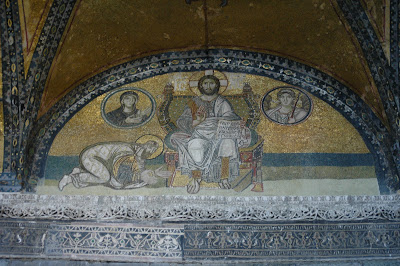I rarely write on this blog and lately I have not posted much at all. I will not make promises to amend that, because life is churning far too fast for me to be sure of keeping such a promise. But I would like to write a few lines of what we see in my cherished Middle East over the past year, and what better time to do so than the anniversary.
So, this is a tribute to unemployed university graduate fruit vendor Mohammed Bouazizi of Sidibouzid in Tunisia, whose frustration and anger was the spark of the Arab revolution of 2011. His action woke many and started a wave of change.
Many more have died since and I fear we have not seen the end of violence. But many many have also found voice and hope. I believe we can never go back to a day where it is said that Arab populations are politically passive or complacent.
This is also for Tawakol Karman, Nobel peace laureate, Alaa Abdel Fattah, Razan Ghazzawi, Ali Abduleman - just to mention but a few of those brave people whose names we have learned this year.
Change will continue to come, if in different timetables and ways in different countries.
At the regional level, inter-regional interaction has also sharpened and heightened.
Saturday, December 17, 2011
Sunday, August 21, 2011
Windows
Saturday, August 20, 2011
Pillar!
The architectural solidity of the Hagia Sofia, one of the earliest building supporting a dome (replicated in Istanbul first almost a thousand years later by Sinan in the Suleymaniyya) and having survived in an earthquake zone, leads me to believe that this amazing column has no important function. But it does sort of lead you to look twice and once again!








Thursday, August 18, 2011
Wednesday, August 17, 2011
More details
Tuesday, August 16, 2011
Mosaics in Hagia Sofia
Some examples of the magnificent mosaics decorating the Hagia Sofia, really personifying the regal origins of the church.
The three top photos are all of mosaics in the upper gallery.



This is the Pantocrator, over the main imperial door from the side gallery to the hall.

Mary with her son, in the vault high above the altar.

The three top photos are all of mosaics in the upper gallery.



This is the Pantocrator, over the main imperial door from the side gallery to the hall.

Mary with her son, in the vault high above the altar.

Monday, August 15, 2011
In Hagia Sofia
Thursday, August 11, 2011
Wednesday, August 10, 2011
Mosaics from Topkapi harem
Monday, August 08, 2011
Looks at Hagia Sofia itself
Sunday, August 07, 2011
Saturday, August 06, 2011
Hagia Sofia courtyard
Subscribe to:
Posts (Atom)










































